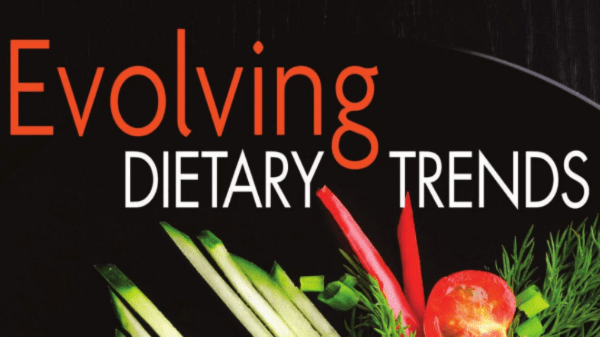Over the past few decades, several significant eating trends have emerged.
Differing from diets, these regimens are broader in their approach, focus on needs other than weight loss, and may be informed by values, such as those embraced by vegan diets.
They’re often spurred by conditions that require lifelong dietary changes, like celiac disease or digestive issues, said Sarah Limbert, RDN, LD, retail clinical dietitian for Kroger Health.
Unlike diets, which usually refer to a short-term approach for losing weight or creating other changes quickly, these trends focus on adopting healthy behaviors for the long term, said Rachel Begun, MS, RDN, culinary nutritionist, and special diets expert in Los Angeles.
Following are descriptions of several current dietary trends.
About 11 percent of U.S. households are gluten-free, and many consumers think it’s a good practice for everyone. Avoiding wheat and gluten is critical for anyone with celiac disease or wheat allergies and may benefit other health conditions.
But a 2018 study found that gluten-free diets relying on packaged foods are higher in fat and sodium, and lower in protein and fiber. Produce-based substitutes—like spiralized vegetable noodles or cauliflower pizza crusts—are more nutritious alternatives, contends Kerry Clifford, MS, RD, LDN, of Fresh Thyme Farmers Market, BB #:290751 headquartered in Downers Grove, IL.
While those adhering to a strict vegan and/or vegetarian diets are few—a 2018 Gallup poll placed them at 8 percent of the population—Americans in general are moving toward a more plant-based diet: a 2017 Nielsen report shows retail sales of plant-based foods and beverages rose 8.1 percent to $3.1 billion.
Many studies suggest vegetarians and vegans live longer and have lower rates of heart disease, cancer, and obesity. And because the diet avoids animal protein (although vegetarians usually eat eggs and/or dairy), fruit and vegetables are strongly emphasized—a plus for the produce industry.
Intermittent fasting involves cycling between periods of eating and fasting; when the body is deprived of food, insulin levels drop, and fat cells release stored sugar to be used as energy. A number of studies show intermittent fasting can promote weight loss, improve metabolic health, and extend life span.
Although no restrictions are placed on the kind of food eaten, most followers of the intermittent fasting plan emphasize high-fiber, nutrient-dense foods, especially fruit and vegetables.
The trendy clean eating plan avoids all processed foods, minimizes animal protein, and strongly relies on fresh produce. Variations on this theme include raw foods diets, detox diets, or juicing.
Currently, juicing is an especially powerful trend: according to a 2018 study from Orbis Research, cold-pressed juice is a $4.3 billion market and is expected to reach $8.1 billion by 2024. Studies on raw foods, detox diets, or juicing are few, but research clearly shows that a diet emphasizing fresh fruits and vegetables, especially in their raw and unprocessed state, promotes overall health.
Popularized by Raphael Kellman, MD, in The Microbiome Diet (Hachette Books, 2015), the gut-health diet avoids processed foods and animal protein and focuses on plant-based foods.
Fruit and vegetables are the cornerstone of this plan: they’re high in fiber, polyphenols, and flavonoids, which promote the growth of beneficial gut microbes and protect against the overgrowth of pathogenic bacteria. Some fruits and vegetables—including Jerusalem artichokes (sunchokes), bananas, asparagus, garlic, and onions—are considered prebiotics, providing food to nourish beneficial gut bacteria.
This is a multi-part series on dietary trends from the October 2019 Blueprints magazine.



